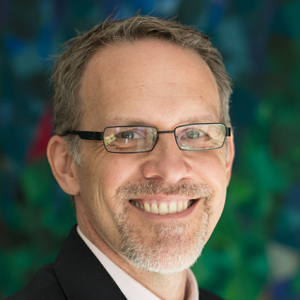Passive obstructionism
I really don’t have a lot of pet peeves. OK, maybe that’s a lie; but most of the ones I have are the common ones. You know, people who don’t use their turn signals, people who chew with their mouths open and something specific to the New Orleans region, people who say, “ax” instead of “ask.” However, my biggest pet peeve when it comes to my job is the people who say something is impossible before even thinking about how to make it possible.
You know people like this: the person who, when you talk to him or her about an experiment, tells you all of the reasons why the experiment won’t work instead of simply doing the experiment; the person who, when you discuss a large-scale experiment, states that it shouldn’t be done because it is so large instead of simply rolling up his or her sleeves and doing it; or the person who, when you talk about implementing policy changes, tells you all the reasons why it can’t be done instead of raising valid concerns and then working with you to figure out how these concerns can be taken into consideration while planning the changes. All of these different scenarios ultimately result in inaction, which causes projects, labs and institutes to stagnate.
The word “impossible” can be very surreptitious and insidious, and it comes in various active forms, which include the words “can’t” and “shouldn’t.” However, it also comes in many passive forms, veiled in statements like “That’s not the way things have always been done,” or “Well, nobody has ever shown this before,” or, at worst, “Nothing ever changes around here, so why even bother?” These latter forms are examples of what I like to call passive obstructionism; people aren’t actively saying that something is impossible or trying to prevent something from happening. Instead, their adherence to the status quo, overt dependence on the literature or outright apathy make it impossible to make something happen.
Don’t get me wrong; there are many valid reasons that easily could make someone slip into the passive obstructive mentality. Sometimes, a person may simply be afraid of doing an experiment for fear that the results will disprove a hypothesis. Other times, someone may be afraid of doing that large experiment for fear that, if it doesn’t work, money and time will have been wasted. Regarding policy and change, some people just don’t like or are afraid of change, regardless of whether it’s for good or bad.
Finally, it’s possible that academic politics may be at play, and no matter how good a plan may be, these politics will work against you simply because someone doesn’t want to relinquish power. Regardless of how infuriating these passive obstructionists may be, these situations should not deter us from pushing forward.
One of the many valuable lessons I learned in graduate school was that there is always a way to get an answer to a question or to make something happen. I didn’t learn this lesson only from my adviser but also from the faculty members in our department. They told me that if you know what the question is that you are trying to answer, and if you know what techniques are available to develop an experiment to address the question, then there should be nothing standing in your way of getting that answer. If there are technical difficulties, then it is your job to think creatively about the process, talk to others to get input and devise a way to approach the question from a different perspective. Sometimes you are not able to get a direct answer, but instead the answer is derived circumstantially from multiple experiments. However, it is still an answer.
The same can be said for ideas and change. People see what policies they would like to implement or change. They know the processes they need to use to implement the change. Sometimes there are valid reasons why the processes originally thought of are not feasible. However, that is when communication needs to happen to reveal what these reasons are and to think creatively about other avenues to achieve the desired change.
We need to ban the “I” word in all of its forms. This will not be easy. It has infiltrated our lives and our mentality too deeply, and rooting it out will take serious attitude adjustments for many of us.
Of course, it is easier to sit back and say something can’t be done rather than actually rolling up your sleeves and doing the hard work, be it that scary experiment, that labor- or time-intensive experiment, or working for institutional change. Also, sometimes it means that you have to be willing to listen to people who oppose change or have competing interests, communicate with them and then work with them to derive a compromise that incorporates ideas from both sides.
By putting our fear aside, by dedicating ourselves to the hard work, by developing a positive attitude, and, when necessary, by putting our pride on the shelf to compromise and work together, great changes and great advancements can and will happen.
Enjoy reading ASBMB Today?
Become a member to receive the print edition four times a year and the digital edition monthly.
Learn moreFeatured jobs
from the ASBMB career center
Get the latest from ASBMB Today
Enter your email address, and we’ll send you a weekly email with recent articles, interviews and more.
Latest in Careers
Careers highlights or most popular articles

Designing life’s building blocks with AI
Tanja Kortemme, a professor at the University of California, San Francisco, will discuss her research using computational biology to engineer proteins at the 2026 ASBMB Annual Meeting.

Upcoming opportunities
#ASBMB26 late-breaking abstract submission opens on December 8. Register by Jan. 15 to get the early rate on our Annual Meeting.

Make your abstract stand out
Ensure your research is impossible to overlook. Get quick, practical reminders for crafting an abstract that attracts readers and helps you build connections at the conference.

Inside industry postdocs
As more Ph.D. scientists look beyond academia, industry postdocs offer a new kind of training, where mentorship meets mission-driven research. Fellows at Pfizer and Genentech share how these programs prepare them to translate discovery into impact.

Upcoming opportunities
The Lipid Research Division Seminar Series returns Oct. 15 with talks on recent advances in triglyceride cycling in adipocytes.

Writing with AI turns chaos into clarity
Associate professor shares how generative AI, used as a creative whiteboard, helps scientists refine ideas, structure complexity and sharpen clarity — transforming the messy process of discovery into compelling science writing.

